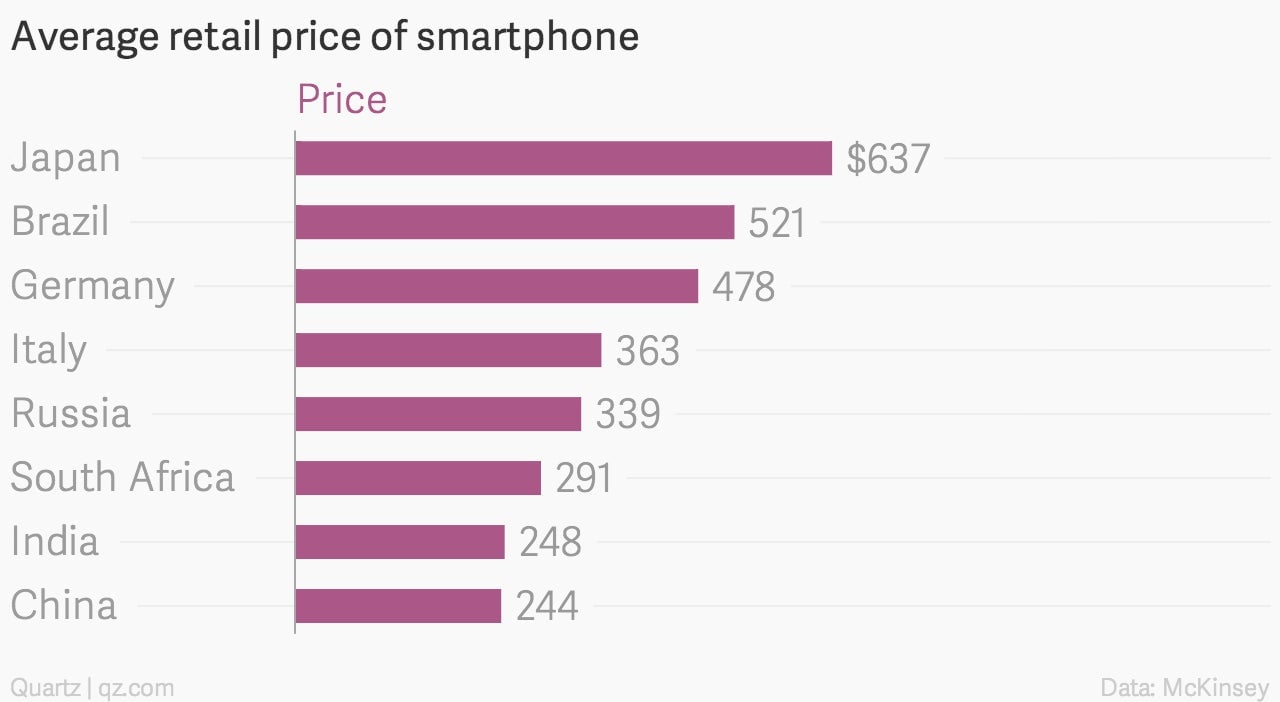Here is the biggest challenge to Modi’s digital India vision
Indian prime minister Narendra Modi wants to create a digital India that would use technology to improve the country’s healthcare systems, education and banking. He envisages ‘smart cities‘ that will use big data to build more efficient cities. But as the following chart shows, India will have to address the problem of digital have-nots at some point, as the barrier to internet access in the country is high.


Indian prime minister Narendra Modi wants to create a digital India that would use technology to improve the country’s healthcare systems, education and banking. He envisages ‘smart cities‘ that will use big data to build more efficient cities. But as the following chart shows, India will have to address the problem of digital have-nots at some point, as the barrier to internet access in the country is high.

A global study by McKinsey and Facebook finds that India has one billion people without Internet access. The report, titled ‘Offline and Falling Behind: Barriers to Internet Adoption,’ has constructed an ‘Internet Barrier Index’ assessing the obstacles to Internet access in 25 countries. India finishes 20th on that list.
A total of 4 billion people in the world don’t have access to Internet—India accounts for 25% of them. The study found that most people who don’t have Internet access live in the rural areas, in low income countries and are largely elderly and female.
The report suggests that the major obstacles in Internet access in India are the same as the most pressing issues facing the country today: literacy, poverty and poor infrastructure.
Thirty seven percent of adult Indians are illiterate which translates to 287 million people—the highest in the world. The report notes that such a high illiteracy rate acts as a major roadblock in expanding the reach of the Internet. Awareness about the Internet and ability to operate a computer is low among Indians, adding to the worries.
“Illiterate farmers are unable to benefit from myriad existing services that provide weather forecasts and market prices through text messages or other digital means,” the study notes.


But here is the good news: mobile data plans in India are among the cheapest in the world and the average retail price of smartphones are sharply declining. Still, Internet is out of the reach of nearly 950 million Indians as many of them struggle to make their ends meet. “Even the cheapest data plans are simply too expensive,” the study says.
And even as India gears up for 4G, network coverage is poor in villages as most service providers don’t have the fiber lines covering those parts of the country, the report says.
Shoddy network infrastructure also means that there is no discernible difference between 2G and 3G speeds while prohibitive costs of spectrum auction has forced telecom operators to be very choosy about where to roll out mobile data services to maximize returns on their investment.
The government is working to make broadband available in every village in India. Such efforts, when executed well, will presumably lower the barriers to internet access in India.